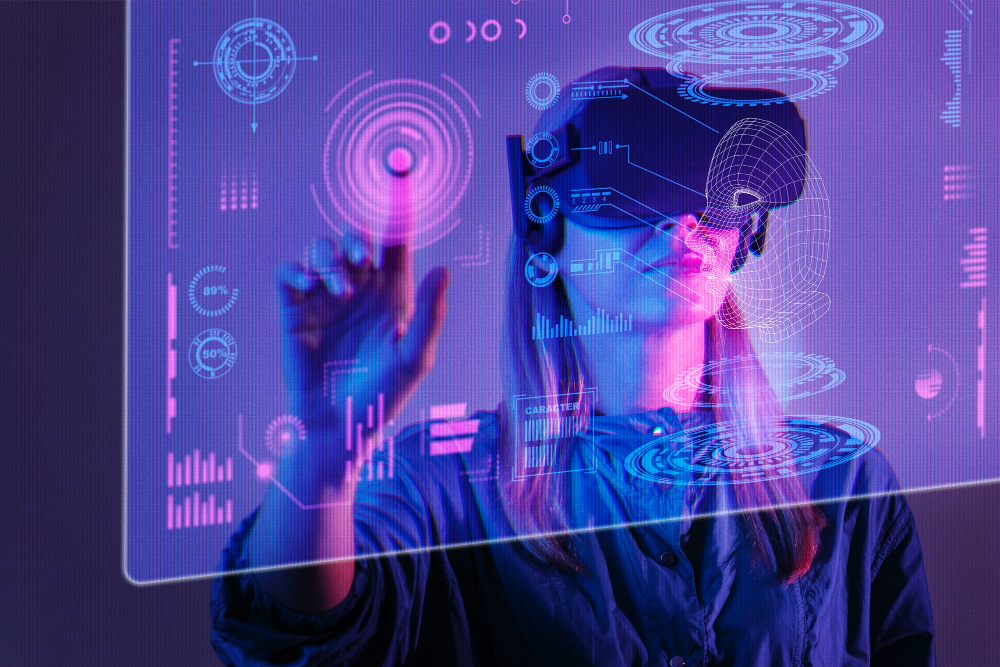In a world increasingly driven by technology, two contrasting forces are shaping our future: the rise of artificial intelligence pushing the boundaries of creative expression, and the urgent need for sustainable solutions to combat climate change.
On one hand, AI is venturing into the realm of art, generating artworks that challenge our perceptions and explore new creative possibilities. On the other hand, advancements in renewable energy sources, energy-efficient technologies, and electric vehicles offer promising pathways towards a greener future. This pursuit of innovation, however, carries its own questions.
Can AI truly replicate the essence of human creativity? And can we ensure that these technological advancements are accessible to all? As we navigate these complexities, another exciting development emerges – brain-computer interfaces, with the potential to transform lives and unlock new possibilities.

Post Contents
AI Gets Creative: From Algorithms to Artworks
Artificial intelligence has made significant strides in the realm of creativity, with algorithms now being used to generate artwork across various mediums. Through the use of machine learning and deep learning techniques, AI systems can analyze vast amounts of data to identify patterns and generate original pieces of art. These AI-generated artworks can range from paintings and sculptures to music compositions and even poetry.
One of the key advantages of AI-generated art is its ability to explore new creative possibilities and push the boundaries of traditional artistic expression. By leveraging algorithms and computational power, AI can produce artworks that challenge our perceptions and inspire new ways of thinking. However, the rise of AI in the creative domain also raises questions about the role of human artists and the nature of creativity itself.
While AI can create impressive artworks, some argue that true creativity requires human emotion, intuition and subjective experience – elements that machines may struggle to replicate. Ultimately, the intersection of AI and art presents a fascinating landscape for exploration and innovation, blurring the lines between human and machine creativity. As AI continues to evolve, it will be intriguing to see how artists, technologists and society at large navigate this dynamic and evolving relationship.
Brainwaves Take Control: The Rise of Brain-Computer Interfaces
Brain-computer interfaces (BCIs) are turning science fiction into reality. Led by Neuralink, a company founded by Elon Musk, this technology offers more than cool gadgets. It holds the potential to restore mobility and communication, and even enhance cognitive abilities, for people with neurological conditions.
A shining example is Nolan Arbaugh, a 29-year-old paralyzed man who participated in Neuralink’s trials. Nicknamed “Patient 1,” Nolan’s journey showcases the transformative power of BCIs. He can now play chess online using only his thoughts to control the cursor – a glimpse into a future where brainwaves control technology.
Despite initial doubts, Nolan’s unwavering belief in Neuralink led him through an unconventional application process and brain surgery. His remarkable progress, from regaining cursor control to record-breaking performance, demonstrates the potential of BCIs.
But Nolan’s story is bigger than him. Neuralink and Tesla, its parent company, are committed to inclusivity, ensuring everyone can access this life-changing technology. By fostering collaboration and supportive communities, they are pushing the boundaries of neurotechnology towards a future without limitations.
With the potential to revolutionize healthcare and society, BCIs are poised to redefine the human experience. As Nolan’s story shows, individuals can overcome challenges and unlock new possibilities with the right technology and support. The era of brainwave control is upon us, and rumoured to be brand new applications for this technology are emerging every day.
Sustainable Tech Solutions for a Greener Future
As the urgency to combat climate change intensifies, sustainable technology solutions are blossoming as beacons of hope for a greener tomorrow. Renewable energy sources like solar, wind and hydropower are leading the charge, harnessing natural forces to generate clean electricity without depleting finite resources or emitting harmful greenhouse gases. These advancements go hand-in-hand with energy-efficient appliances and lighting, which significantly reduce our energy consumption and carbon footprint. Smart home systems are becoming increasingly popular, acting as intelligent stewards that optimize energy usage and minimize waste.
The transportation sector, a major contributor to air pollution, is undergoing a sustainable revolution. Electric vehicles are gaining traction, offering a cleaner and quieter alternative to traditional gasoline-powered cars. Advancements in battery technology are steadily increasing their range and affordability while charging infrastructure continues to expand. Public transportation systems are also evolving, with a focus on electric buses, light rail and improved infrastructure to encourage a shift away from car dependence.
Sustainable tech solutions extend beyond energy and transportation. Bioplastics derived from renewable sources like algae offer a promising alternative to traditional petroleum-based plastics, reducing plastic pollution and reliance on fossil fuels. Vertical farming, a technology that allows for the cultivation of crops in vertically stacked layers, offers a solution for growing food in urban areas and reducing our reliance on land-intensive agricultural practices.
These advancements demonstrate the immense potential of technology to create a more sustainable future. Nevertheless, the success of these solutions hinges not only on their technical viability but also on their affordability, accessibility and integration into existing infrastructure. Sustainable technologies can pave the way for a future where economic growth and environmental responsibility coexist through global collaboration, innovation and responsible implementation.
In conclusion, the future appears bright with AI pushing artistic boundaries, sustainable tech combating climate change and BCIs offering life-altering solutions. While questions remain about accessibility and the true nature of AI creativity, these advancements paint a picture of a more expressive, sustainable and empowered future for all.